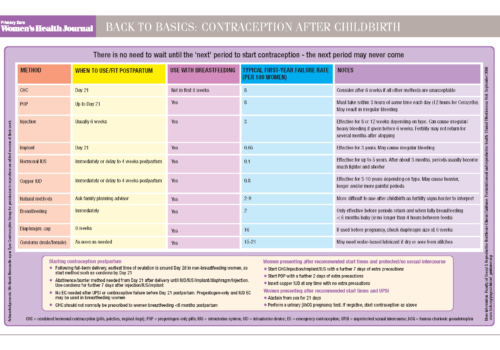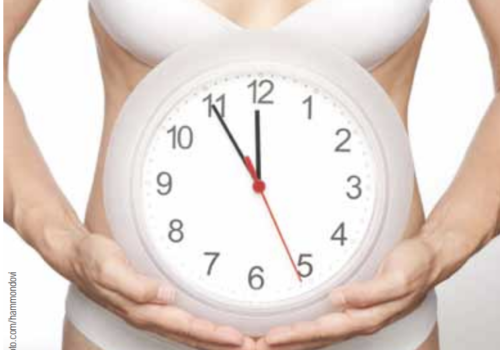In the UK, under the Abortion Act 1967, an abortion (termination of pregnancy; TOP) can only be carried out by a hospital or a specialised licensed clinic.
Home delivery plans raise professional concerns
Perinatal healthcare professionals in the UK have given a mixed reception to Government plans to increase the numbers of home births.
A survey of 831 midwives, GPs, consultant obstetricians/gynaecologists and consultant neonatologists/paediatricians in the Eastern NHS Region received a wide range of responses concerning their experience of, and enthusiasm and support for home birth:
Experiences of home birth
7 (5-8)
5 (3–7)
5 (2–5)
2 (1–3)
Enthusiasm for home birth
9 (8–10)
3 (3–7.5)
5 (3–7.5)
4 (3–5)
Support for Government plans to increase home delivery rates
8.5 (7–10)
5 (2–6)
5 (2–5)
3 (2–5)
* All scales 0–10 from strongly negative (0) to strongly positive (10); data are median (IQR) ** Consultant obstetricians and gynaecologists † Consultant neonatologists and paediatricians
Government moves to make home births more accessible also elicited a range of responses from the different disciplines. Midwives generally reported positive experiences of home delivery and were more favourable about the concept of home birth than any of the other professionals.
The authors suggest that negative experiences and opinions of perinatal healthcare professionals may impact on women’s uptake of home delivery. These concerns will need to be addressed if the Government plans to increase home delivery rates are to succeed.
McNutt A et al. Int J Gynecol Obst 2012:119(Suppl 3):S419(O444)
Botulinum toxin: effective for overactive bladder in clinical practice
Botulinum toxin A effectively treats symptoms of overactive bladder (OAB) with high rates of patient satisfaction, according to questionnaire study from a UK centre.
A total of 60 women (median age 59 years) with OAB treated at University Hospital of North Staffordshire received botulinum toxin injections into the detrusor muscle. All had been unsuccessfully treated with urinary incontinence medications and most had received physiotherapy.
According to results of a questionnaire sent after botulinum toxin treatment, 50% of the patients experienced improved symptoms within one week, with a further 30% showing improvement between two weeks and four months after the procedure. Symptom improvement lasted between zero and nine months for 53% of the patients. Three-quarters of the patients noted that the botulinum toxin injections were “very effective, effective or moderately effective” in treating their symptoms.
Patients also expressed high satisfaction, with 73% commenting that the injection exceeded or met their expectations and 80% saying they would repeat the treatment if required.
These results suggest that botulinum toxin A may provide a valuable alternative treatment for OAB. Current NICE guidance advises that botulinum toxin A should be only used in women who have not responded to lifestyle interventions, bladder retraining and pharmacological treatment and who are willing and able to self-catheterise.
Rigby J et al. Int J Gynecol Obst 2012:119(Suppl 3): S463 (A0573)
NICE guidelines on the management of urinary incontinence in women. October 2006. http://www.nice.org.uk/nicemedia/live/10996/30282/30282.pdf
Editorial
It has certainly been a summer to remember, and one with important take-home messages for the health of every woman. The London Olympic Games demonstrated the benefits that can accrue from the best of evidence-based health care and individual healthy behaviours. And the London Paralympics show that, with personal determination and excellent support, it is possible to overcome almost unimaginable disadvantages to achieve at the highest level.
A question of culture? Faith and a woman’s choice of contraception
The most effective contraceptive is the one that the woman seated opposite you will use. Women are more likely to adhere to contraception when they have been actively involved in choosing the method. This choice is influenced by the patient’s values and beliefs, which are in turn informed by her religious or cultural background. Awareness of these influences helps us to better understand and facilitate patient choice.
Improving survival in vulval cancer
Vulval cancer is primarily a disease of elderly women, but is increasingly seen before the menopause. It is a rare disease, and a primary care health professional may see only one case every seven years. It is, however, essential for GPs and practice nurses to be aware of the early signs and symptoms of vulval cancer, since it is highly curable if diagnosed and treated at an early stage.
Back to Basics: Contraception after childbirth
New perception, new QOF, new opportunity
Recent changes in the perception of osteoporosis and fracture risk have placed their management firmly within primary care. The inclusion of osteoporosis in the Quality and Outcomes Framework (QOF) supports this change and acknowledges the important role of GPs and practice nurses. A new online resource aims to help primary care in taking this opportunity to improve patient care and achieve QOF domains.
Could it be cancer? Investigating postmenopausal bleeding
Primary care is usually the first point of contact when a woman presents with postmenopausal bleeding (PMB). Prompt referral is essential, since bleeding may be a sign of endometrial cancer. But it is also important for GPs and practice nurses to explain to the patient the reasons for concern, as well as the purpose of the investigations that she is likely to encounter in secondary care.
A lasting legacy? Winning the race for bone health
As we watch our young female athletes compete in the Olympics, we hope that their legacy will be increasing participation in sports and exercise by all women. The positive effects of exercise are well known, and a sedentary lifestyle can reduce bone mineral density and increase the risk of postmenopausal osteoporosis. But for the young female performer, high volumes of exercise may paradoxically be linked to the loss of oestrogen and higher risk of stress fracture and osteoporosis associated with the female athlete triad.
Vulval itch
The vulva is the area of skin just outside the vagina. Most women have a slight vulval itch from time to time, but pruritus vulvae means that the itch is persistent and is often worse at night. Pruritus vulvae affects about one in 10 women at some time in their lives.
Age and fertility: How old is too old?
Over the last 30 years, there has been a trend towards lower parity, older mothers, and a significant rise in the incidence of multiple pregnancies, both spontaneous and induced by assisted reproductive technologies (ART). These developments mean that women receive contradictory information on age-related effects on their ability to conceive. Primary healthcare professionals can play a key role in enabling women to make realistic and informed choices about the risks of deferring childbirth.

























